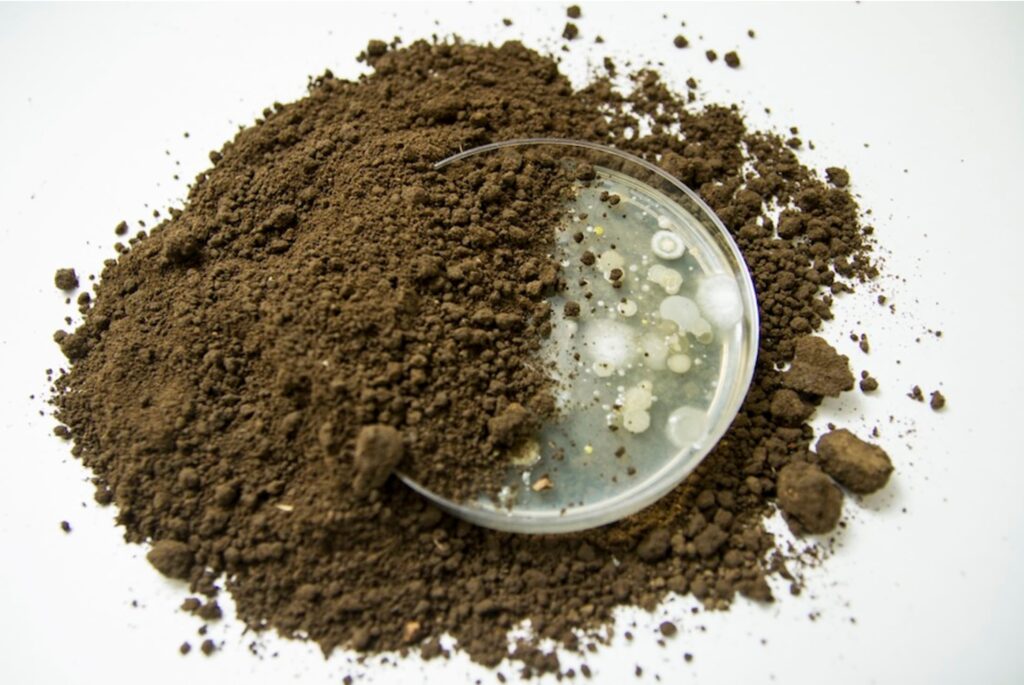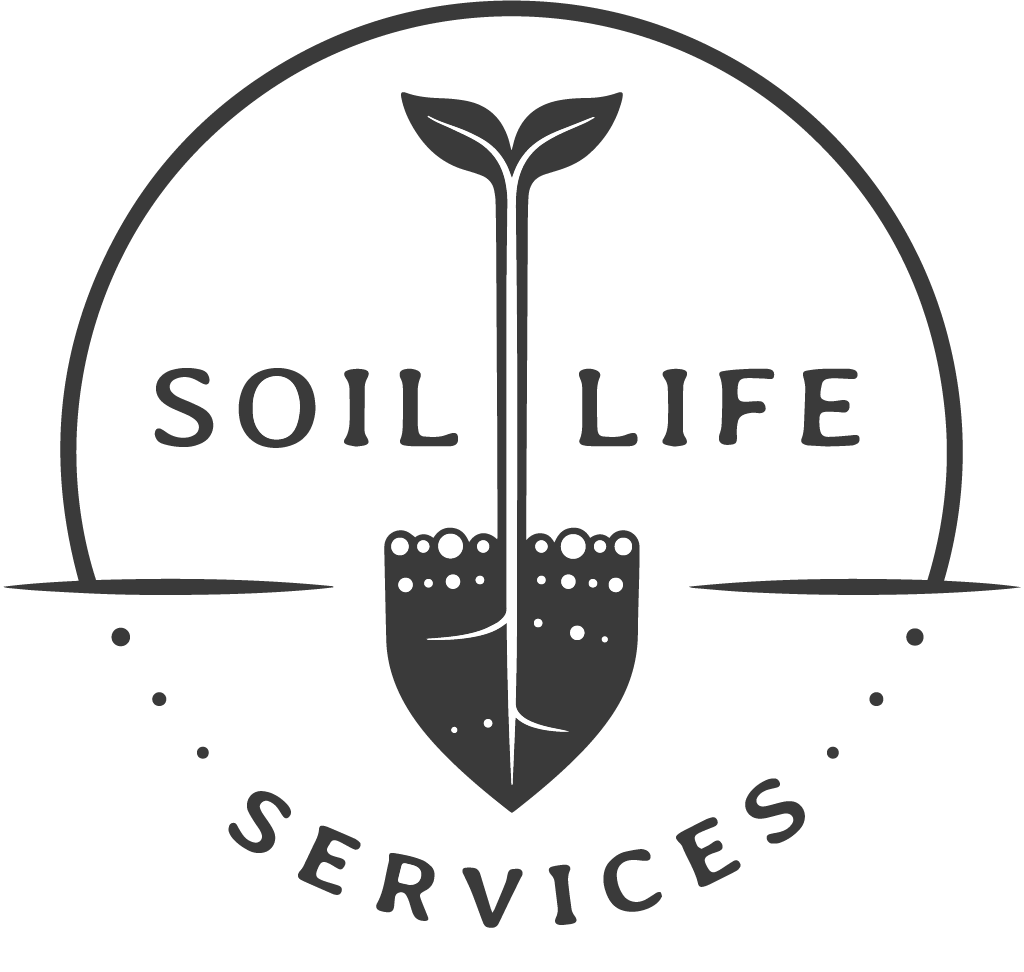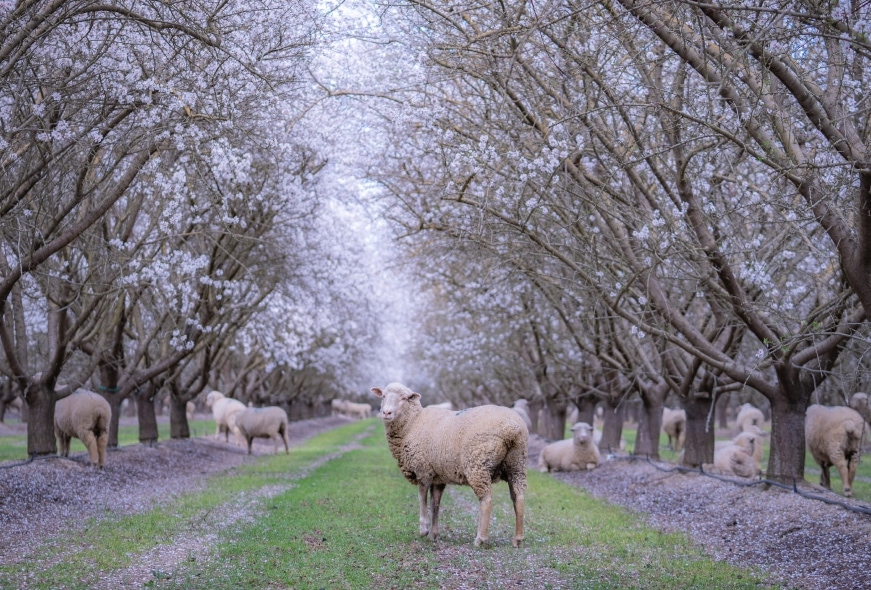
Treehouse Nuts, Pacific Agriculture, Simple Mills, Daily Harvest, Capello's, Cal Ag Solutions
Quantifying long-term impact of cover crops, compost + sheep grazing on soil health and ecosystem services using side-by-side comparisons in both organic and conventional systems (stratified random sampling). Analyses include soil carbon (C), texture, pH, EC, aggregate stability, water extractable C & nitrogen, mineralizable C, nitrate/ammonium, complete nutrient analysis, water holding capacity, water use, pest damage, yield, leaf tissue analysis, and almond nutrient density.
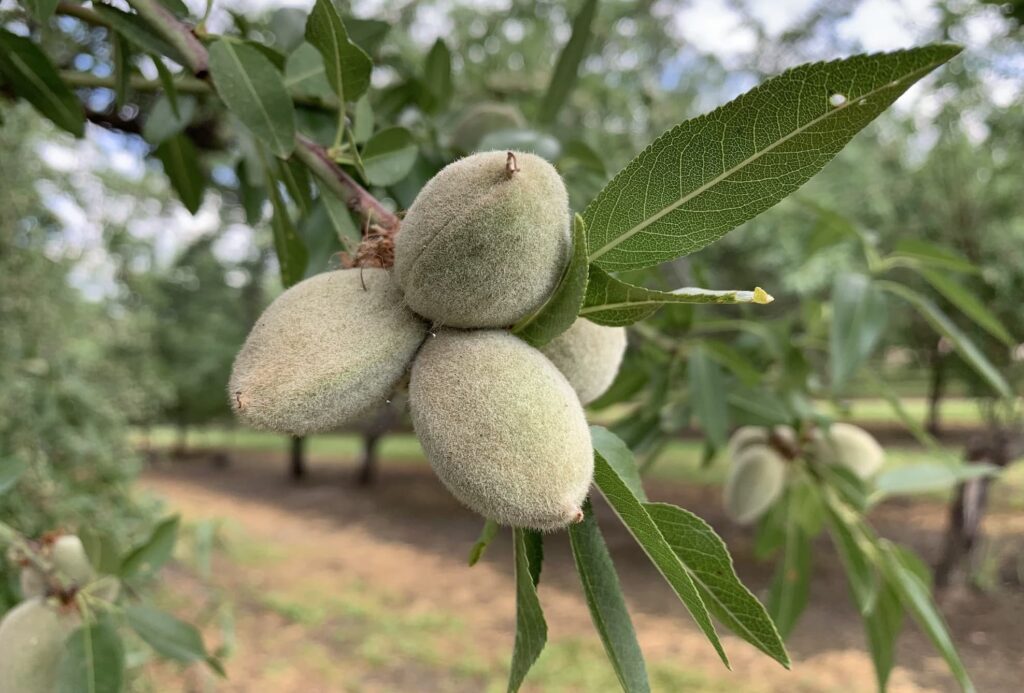
Ben & Jerry's, Gonzales-Siemens Family Farm, White Buffalo Land Trust, Cal Ag Solutions
Investigating the long-term impact of stacking soil health practices (compost, cover crop, grazing, conservation tillage, and biological inocculum) on soil carbon (0-100 cm), pH, texture, nitrate/ammonium, complete nutrient analysis, POXc, mineralizable C, ACE protein, aggregate stability, water holding capacity, pest damage, invertebrate abundance/diversity, beehive health, yield, and GHG impact (life cycle assessment); randomized block design.
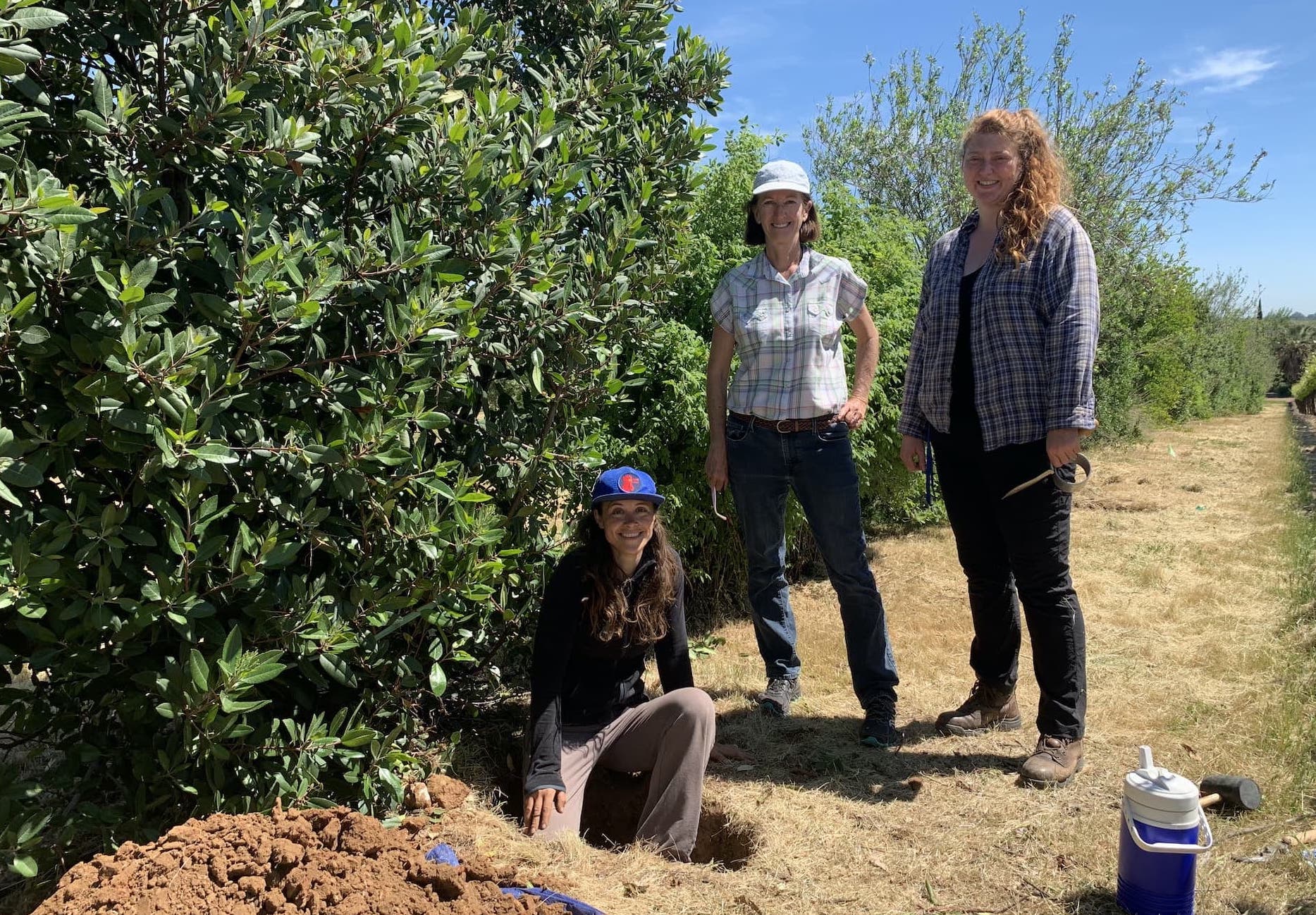
UC Davis, UC Ag and Natural Resources
Quantified long-term impact of hedgerows on soil health (0-20 cm) and soil carbon (0-100 cm) at 21 sites (>600 samples), representing a range of soil texture (16 to 51% clay). Used multivariate statistics (PCA) to identify factors contributing to accrual of soil C and relationship between biological and physicochemical properties; evaluated soil health metrics most sensitive to management; estimated climate change mitigation potential of planting hedgerows on farm borders statewide (at 50 and 80% adoption).
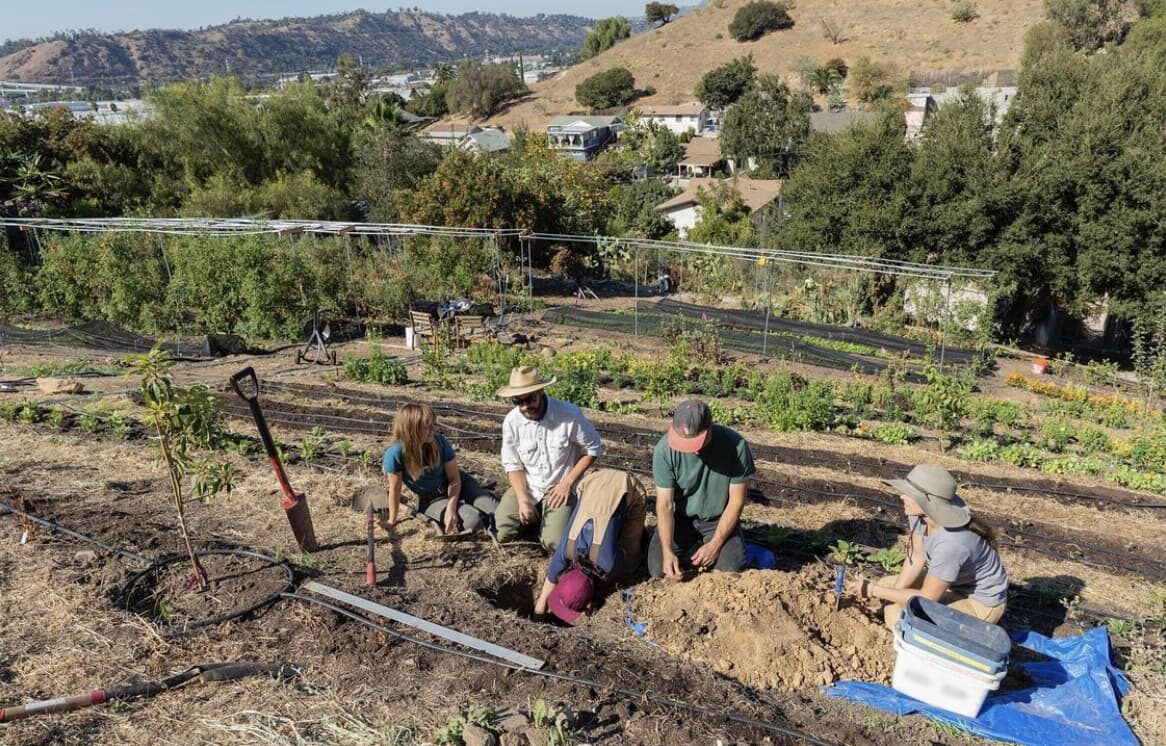
General Mills
Developed monitoring program for 23 farms and ranches in California; 10 farms in Minnesota. Over 1000 samples analyzed for soil carbon and bulk density; ~500 data points on pH, EC, active carbon (POXc), ACE protein, respiration, microbial biomass/diversity (PLFA), complete nutrient analysis, and texture; ~300 for aggregate stability; and ~400 in-field assessments of infiltration rate and surface/subsurface hardness

Land Core USA, University of California - Berkeley, Michigan State University, Compeer Financial
Building an actuarially-sound, predictive model to evaluate the risk mitigating benefits of soil health, as a tool to inform lenders and insurers. Specifically, using hierarchical modeling, causal inference, and Bayesian statistics to assess how adoption of crop rotations and reduction of tillage affects yield responses in extreme weather conditions and across edaphoclimatic contexts.

White Buffalo Land Trust
Developed and implemented monitoring plan at Summerland avocado orchard using three toposequences to assess impacts of soil health management systems on soil C, bulk density, texture, pH, EC, total nutrients, aggregate stability, PLFA, and in-field indicators: infiltration and (sub)surface hardness. Additionally conducting soil C monitoring for 2 CDFA Healthy Soils Projects.
Mitchell, J. P., Cappellazzi, S. B., Schmidt, R., Chiartas, J., Shrestha, A., Reicosky, D., … & Scow, K. M. (2024). No-tillage, surface residue retention, and cover crops improved San Joaquin Valley soil health in the long term. California Agriculture.
Chiartas, J.L., Tiffany, S.E., Ayala, E. 2024. Understanding the Science of Climate-smart Agriculture in California. Community Alliance of Family Farmers.
Stanley, P., Spertus, J., Chiartas, J., Stark, P. B., & Bowles, T. 2023. Valid Inferences About Soil Carbon in Heterogeneous Landscapes. Geoderma 430, 116323.
Chiartas, J. L., Jackson, L.E., Long, R.F., Margenot, A.J., O’Geen. 2022. Hedgerows on crop field edges increase soil carbon to a depth of 1m. Sustainability 14(19), 12901.
Chiartas, J. 2021. Long-Term Impact of Management on Deep Soil Carbon and Soil Health in Mediterranean Agroecosystem. Dissertation.
Climate Change Task Force. 2021. Advancing Resilient Agriculture: Recommendations to Address Climate Change. Crop and Soils.
Tautges, N. E.*, Chiartas, J. L*., Gaudin, A. C., O’Geen, A. T., Herrera, I., & Scow, K. M. 2019. Deep soil inventories reveal that impacts of cover crops and compost on soil carbon sequestration differ in surface and subsurface soils. Global Change Biology, 25(11), 3753-3766.
*Share joint first authorship
